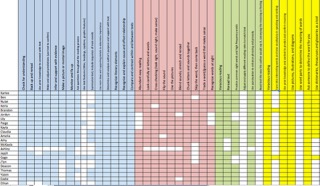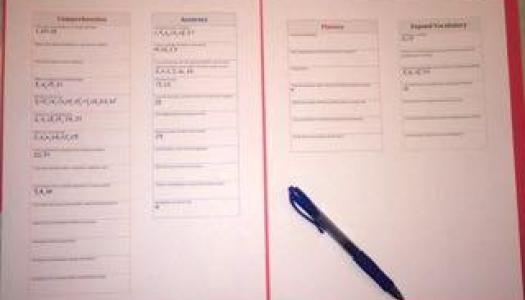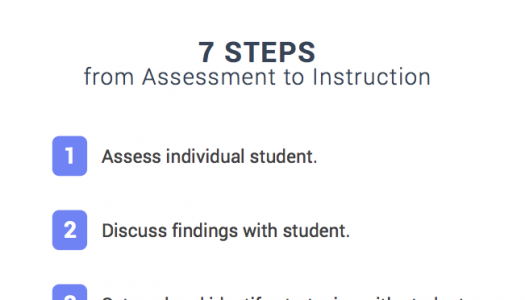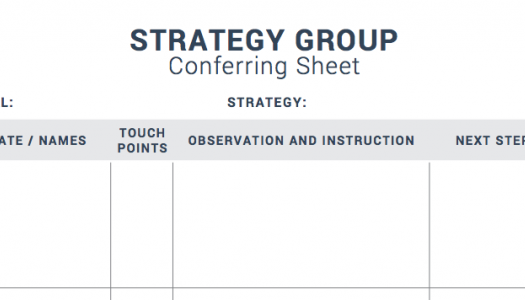Whole Group and Small Group Planning at a Glance
Join Our Community
Access this resource now. Get up to three resources every month for free.
Choose from thousands of articles, lessons, guides, videos, and printables.
I recently met Sabrina Pagnotta at a conference in Canada. She has come up with an alternative to the Whole-Group Planning Sheet. Her approach to recording the strategies students have been taught and use, those worked on and not yet grasped, and strategies the whole class may need, make planning for the whole group and a small group a snap. Read about Sabrina’s idea and download her forms to give it a try in your own classroom. Thanks so much for sharing Sabrina.
I thought it would be easy to create an Excel spreadsheet to help me see the strategies my kids know and need to know. With this form, I made all 38 strategies (color-coded) across the top of the sheet with the students' names down the side. When a student has accomplished a strategy, the box that corresponds to the his or her name and the strategy is highlighted. In this way, I am able to see strategies the whole class is missing and where I might need to focus my whole-group instruction.

.jpg)
In this second example (close-up), I can see that the whole class has not received instruction with the comprehension strategies of Using text features and Summarizing the text. Alternatively, I can see that Ashley has not received instruction in multiple areas of Comprehension, nor is she using those strategies. Under Accuracy, I can see that the whole class is fairly competent. Therefore, I would not want to provide whole-group instruction based on accuracy; instead I can make individual accuracy goals for a few select students. I can also see that there are three or four students who all need to work on the same strategy in accuracy. This information can also help me form small groups.
Taking this step a bit further, I thought it would make sense to put the student Touch Points in each box as well. That will show when a student has accomplished his or her goal, or when we tried the strategy only to discover it wasn’t the correct one at that time and moved on (as is the case with the example above for Ethan and Japjit).
Below is a link to a blank Excel sheet if others would like to give it a try. Alternatively, teachers could print out the template and simply write in their Touch Points and highlight by hand when individuals have accomplished their goals.
When thinking of curricular coherence, another way to use Sabrina’s idea is below. When assessing your students using the 7 Steps from Assessment to Instruction, record the student’s individual strategy or strategies you will be starting with by marking them in the child’s corresponding box on Sabrina’s form. When finished assessing the whole group, you can see other students with the same goal, which would make for a natural small group.
For example, if you look at the figure below, you will see that both Genivive and Taylor need Monitor and Fix up. Therefore, we will provide instruction to them individually as well as together in a small group. Teaching the same strategy in a small group and individually provides curricular coherence to accelerate student learning. If you notice a multitude of students all needing the same strategy, that will be a good strategy to teach in a whole-group setting.
.jpg)







